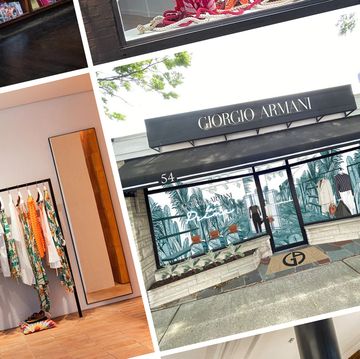When stay-at-home orders were set in motion in March, life completely upended. Offices and homes merged, masks and gloves became required accessories, and all our routine beauty appointments went on a permanent hiatus. While most hair and nail treatments can be replicated at home, some require an expert hand: Botox and injectable fillers. Your derm’s office may be the first place you want to visit once quarantine is lifted, but there are a few COVID-19 specific caveats to know before scheduling your next injectable appointment.
“Over the last 10 years, cosmetic dermatology has become more acceptable and has moved away from being viewed as medicine. But Botox and fillers are medical procedures, and in the state of COVID, we really do have to take extra precautions when injecting,” says dermatologist Paul Jarrod Frank, the Chief Medical Officer and Founder of the PFRANKMD brand. “It’s going to be an adjustment for everyone coming back into my office.”
YOU WILL BE SCREENED AND TESTED
Frank, who recovered from COVID-19 in April, has already adopted safety policies to decide whether or not his patients are healthy enough to enter his office. “We will be taking temperatures at the door and patients will need to fill out a form at home for basic screening of exposure to the virus,” he explains.
Dermatologist Macrene Alexiades has similar plans for when she reopens her practice, the Dermatology & Laser Surgery Center of New York. But her prerequisites will determine whether or not a patient can even secure an appointment.
“I have implemented an exact plan for reopening that requires changes on the part of the patient, the practice, and ancillary staff,” Alexiades, an associate clinical professor at Yale University’s School of Medicine, explains. “First, there will be a screening process for potential exposure to COVID-19 that a patient must pass to get an appointment. Then we will do a rapid test, when they are available for our office. That will be a critical component of reopening.”
PPE WILL BE A REQUIRED ACCESSORY
“Patients must wear a mask when not being actively treated,” adds Frank. “Staff will be using equipment like N95 masks, visors, and protective clothing shields.”
Alexiades has an analogous agenda when it comes to personal protective equipment (PPE), and will be wearing a protective shield that spans the top of her head to her chest.
“That is an artistry and intimacy of what I do. I use hundreds of shots during a treatment,” she describes. “The process of doing injectables requires very close proximity to the patient. It will be interesting to do delicate medical work at a distance with shields and barriers between me and my targets.”
YOU WILL SEE LESS STAFF IN THE OFFICE
The bubbly staff who typically greets you upon entering your derm’s office will be replaced with an online system. “After my patients are evaluated and treated, they will exit the office without checking in or checking out. It will all be done remotely,” says Alexiades.
Frank plans on cutting his office’s schedule in half. “When I inject, I usually have a crowd of two nurses in a room with me,” he explains. “I also have several providers and nurses in my office at one time treating patients. So we will have to be take precaution and work in shifts.”
“I think it's just going to be a slower pace,” says Frank. To compensate, he plans on extending his hours and staying open six or seven days a week. “This is not to decrease the frequency of care, but rather to maintain the quality of care and safety when someone's in the office.”
YOUR PROCEDURES WILL BE LIMITED
If you are used to getting a laser, body treatment, jab of Botox, and a touch of filler during one dermatologist visit, your next injectable agenda may come as a shock to you.
“In my practice, it’s very common for patients to get ten procedures done at once,” says Frank. “They'll get an Emsculpt from a nurse, a cellulite treatment from another practitioner and Clear + Brilliant from me. But there's going to be limits on how many treatments you can have and how much time you can spend in the office due to staffing.”
In another approach, Alexiades will carve out longer appointments for her patients so they can come in less often. “The experience will be one of quality, not quantity,” she explains. “Far fewer patients will be seen for a much longer treatment visit. That way I can perform the necessary medical and aesthetic treatments in one full hour as opposed to spacing out visits in shorter treatments.”
YOU WILL VISIT THE OFFICE LESS OFTEN
Both Alexiades and Frank feel their patients will get fewer, more impactful procedures over time, especially in an effort to keep patients up to care for the possible second wave of COVID-19.
“At first everyone's going to want to take care of the basics with quick-fix injectables, but on a long-term game plan, there is going to be a trend towards bang for your buck procedures,” says Frank. “People will have more downtime on their hands and want a procedure like Fraxel instead of five Clear + Brilliant treatments because it's going to give them greater cost efficacy. Long-term, patients will look for real differences as valuable.”
Alexiades imagines patients will request to tweak their most visible areas first. “People who are depending on Botox to maintain a wrinkle-free look will start with the forehead, frown lines, cheeks to lift the face back up again.”
To maintain the look of Botox and filler, Alexiades urges her clients to use products at home that contain active ingredients like peptides to induce collagen production and amino acids to mimic the dark-spot removal of a laser.













